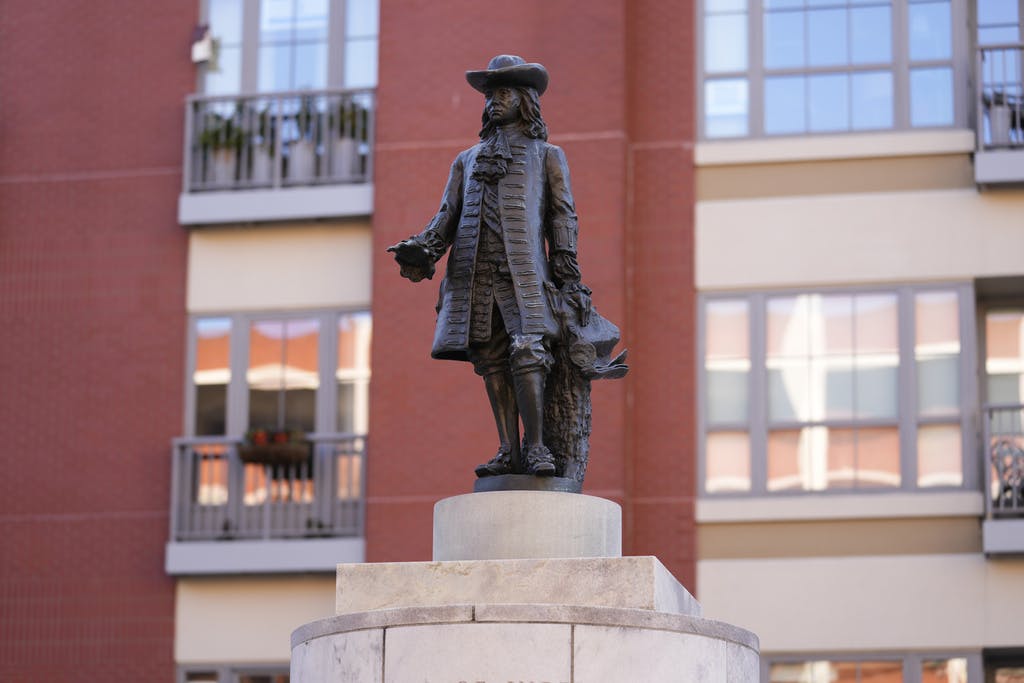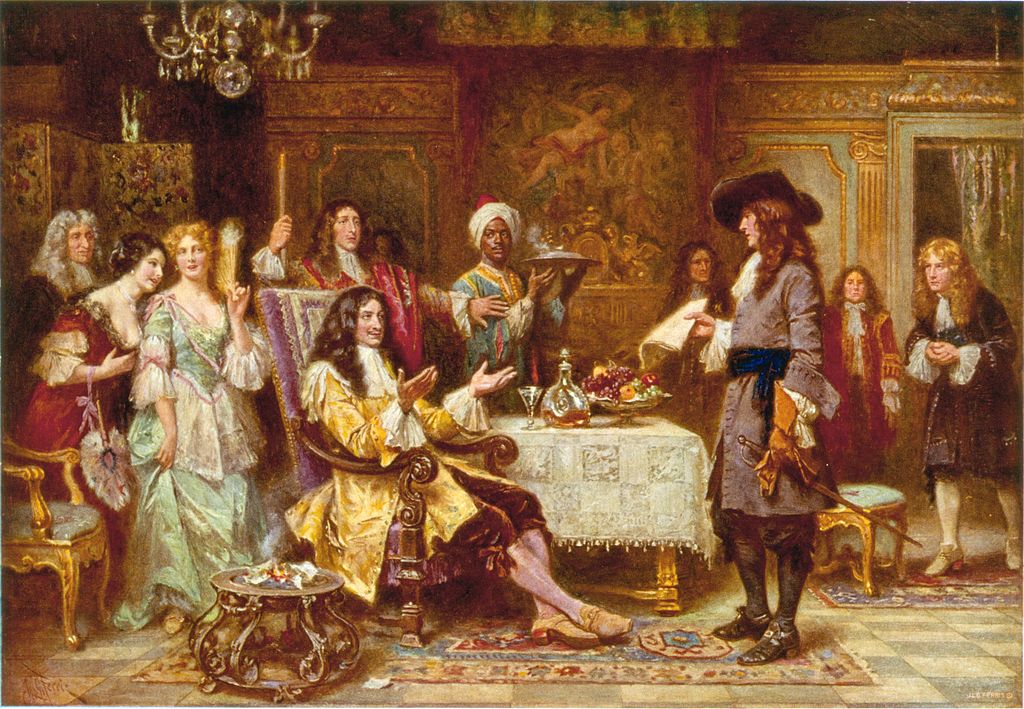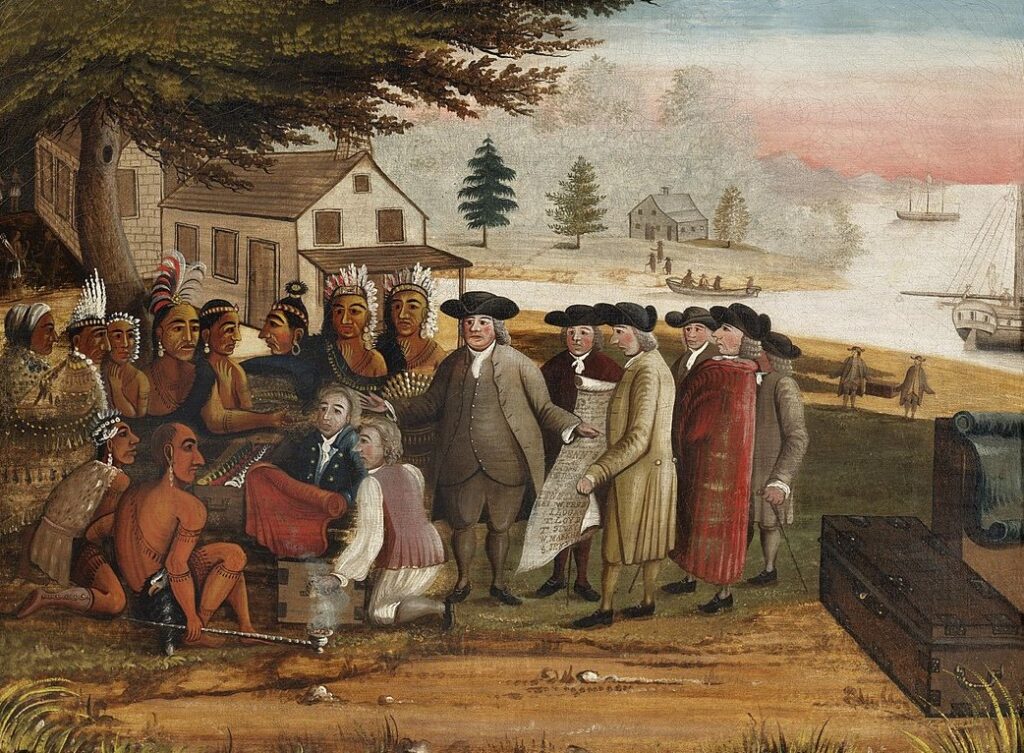Native Americans Deny Pushing To Remove William Penn Statue From Philadelphia Park
‘Of all the terrible human beings that inflicted tragedy upon native peoples, I don’t put William Penn in that category,’ Shawnee chief says.

HARRISBURG, Pennsylvania — The National Park Service’s proposal to remove a William Penn statue from a historic site in Philadelphia — quickly withdrawn amid a backlash — wasn’t a priority for some of the Native Americans the agency was required to consult with as it prepared to renovate the deteriorating plaza.
Uprooting the statue of Pennsylvania’s founder from Welcome Park also wasn’t a major point of discussion as park service officials and tribal representatives met to plan the renovation over video last year, said the director of cultural education for the Delaware Tribe of Indians, Jeremy Johnson.
Rather, what tribal representatives had envisioned for the plaza is an exhibit that would highlight the culture, history, traditions and perceptions of the Native Americans who had lived there for thousands of years before Penn arrived, Mr. Johnson said.
“We do still speak highly of William Penn,” Mr. Johnson said. Tribal representatives, he said, “were really just focusing on our culture and our history and that, in a way, he was an important part of it, but … it was a small interaction compared to our overall history.”
The park service hasn’t responded to repeated questions about the abandoned proposal.
Announced quietly on Friday, the plan quickly and — perhaps unexpectedly — laid bare the sensitivities around the image of the colonial founder of Pennsylvania and threatened to become the latest front in a fight over how to tell the nation’s history through its monuments.

A top state Republican lawmaker, Bryan Cutler, said removing Penn’s statue to “create a more inclusive environment” took an “absurd and revisionist view of our state’s history.” Governor Shapiro pressed the Biden administration to keep the statute in its “rightful home.”
The park service said it consulted with representatives of the Haudenosaunee, the Delaware Nation, Delaware Tribe of Indians, the Shawnee Tribe, and the Eastern Shawnee Tribe of Oklahoma, whose ancestors were displaced by the Pennsylvania colony. Such consultation with the federally recognized tribes is required under the National Historic Preservation Act.
Leaders of the Shawnee Tribe and the Eastern Shawnees, both now based in Oklahoma, like the Delawares, said they hadn’t had any discussions about it. Chief Ben Barnes of the Shawnee Tribe said his tribe hadn’t received a customary “dear chief” letter from the agency — and he objects to removing the statue.
“William Penn was an ally of the Shawnee,” Chief Barnes said. “As long as he lived, he kept his promise. As long as he was able to speak on behalf of the colony in western Pennsylvania, the Shawnees had a home there. … Of all the terrible human beings that inflicted tragedy upon native peoples, I don’t put William Penn in that category.”
Historians say Penn’s willingness to negotiate with Indians for lands distinguished him from previous colonizers in the Chesapeake and New England where early colonial regimes were more willing to use armed force in bloody confrontations to expand their settlements.

Yet Penn’s legacy has been mythologized, to some extent, and his mission still led to the dispossession of natives, some historians say.
The statue of William Penn — a replica of the bronze one that sits atop City Hall some 15 blocks away — stands on top of a round marble base that reads “Welcome Park is dedicated to William Penn.”
The park is named for the ship that brought Penn to Philadelphia in 1682 and is built on the site of one of Penn’s homes, demolished in the 1800s.
Mr. Johnson said he had no strong feelings about removing the statue as part of the wider plan to transform the plaza.
That plan would replace a timeline of Penn’s life and legacy on one wall — with such titles as “gentleman,” “Quaker,” “proprietor” and “friend of Indians” — with new panels featuring indigenous history. The plan also involved adding native plants and trees and circular benches to make it more welcoming, Mr. Johnson said.
The park service now says the statue will stay put, and it remains committed to rehabilitating the site after a “robust public process to consider options.”
Penn arrived in present-day Philadelphia in 1682 after being granted the charter for a huge swath of land by King Charles II, land that the English had wrested from Dutch colonialists, historians say.
As a Quaker, Penn sought peaceful interactions with the Lenape people, said a retired professor of history at Lehigh University, Jean Soderlund.
But his goal as the “proprietor” of the colony was to obtain their land so that he could sell it to European immigrants, Ms. Soderlund said.
It was “conquest through treaty,” said an associate professor of history at Utah Valley University, Michael Goode.
Many Europeans and Americans saw William Penn as a symbol of enlightenment and religious tolerance, Mr. Goode said.
Tribes trusted Penn to avoid bloodshed and used it to their strategic advantage in treaty negotiations, historians say.
Well after Penn died in 1718, tribal leaders invoked his name in treaty negotiations with colonial governors as an honest broker whose legacy those governors were obligated to uphold by being accountable to the treaties they signed, historians say.
“This is partly rhetorical and strategic and all the rest,” said a political science professor at the University of Michigan, Andrew Murphy. “But he did have a kind of reputation as someone who was revered in a way, or at least what he represented came to be revered.”
Associated Press
